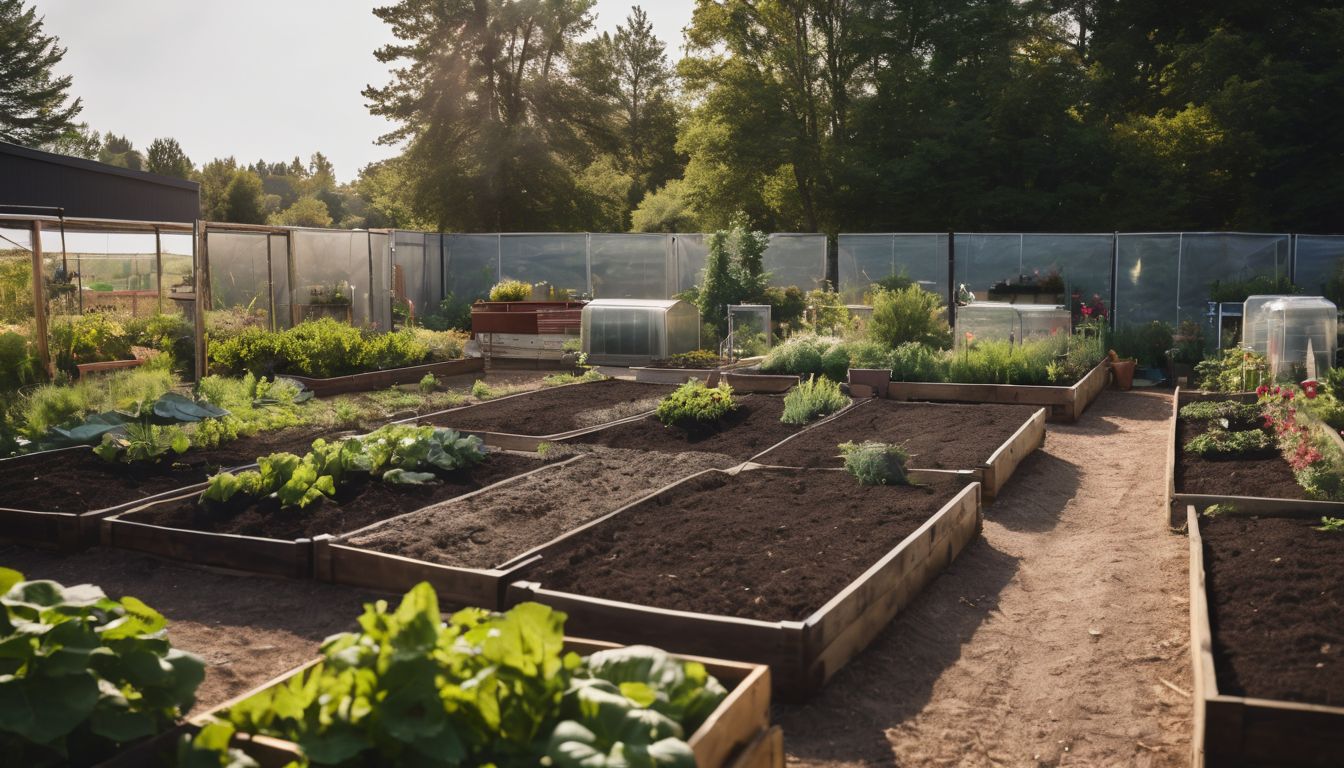Witnessing the sorry sight of our local rivers choked with waste can be deeply distressing, particularly when we consider the vital role these waterways play in sustaining life. Like you, we’ve stood on riverbanks and felt that pang of sadness at this environmental woe; but did you realise just how much impact a single clean-up event can have? It’s remarkable to see tonnes of rubbish disappear thanks to community effort.
Our guide is here to demystify the process for you, offering simple steps for rallying your neighbours and restoring our rivers to their natural beauty. So let’s roll up our sleeves together—it’s time to breathe life back into these precious streams!
Key Takeaways
- Launching a river clean – up brings numerous benefits, such as improved water quality and safeguarded wildlife habitats. It also serves to inform neighbours about the importance of protecting our environment for the future.
- A successful event starts with assembling a team passionate about conservation, securing permissions, choosing a safe location, preparing equipment, and making sure there’s a plan in place for waste disposal after the cleanup.
- Providing volunteers with appropriate gear and tools is crucial for ensuring safety during the clean-up. Keeping an equipped first aid kit ready and understanding potential hazards can prevent accidents and injuries.
Benefits of Organising a Local River Clean-Up
Organising a local river clean-up can help improve water quality and protect wildlife and natural habitats. It also provides an opportunity to educate the community about the importance of environmental conservation.
Improve water quality
By removing rubbish from our rivers, we directly enhance the water’s purity. Each piece of plastic, every can and bottle we take out stops harmful chemicals from leaching into the ecosystem.
Cleaner waterways mean safer drinking sources for us and clearer habitats for aquatic life. It’s not just about looking nice; it’s about maintaining a balanced environment where fish can thrive and plants can grow free from pollution.
We’re also cutting down on pollutants that cause nasty algae blooms and deoxygenated “dead zones” where nothing can live. Our actions support sustainable river management, helping to protect our natural resources for generations to come.
Now let’s consider how a clean riverbank shields local wildlife and preserves precious ecosystems.
Protect wildlife and natural habitats
After improving water quality, it’s essential to protect wildlife and natural habitats in the area. By organising a local river clean-up, we can prevent harm to the diverse wildlife that depends on healthy river ecosystems for survival.
Removing rubbish and pollutants from rivers helps ensure a safe environment for fish, birds, and other creatures. Furthermore, by keeping their habitats clean, we play a significant role in preserving nature’s delicate balance and promoting ecological sustainability for future generations.
Engaging in community cleanup efforts contributes towards environmental stewardship and demonstrates our commitment to preserving the natural beauty of our local waterways.
Initiating a river protection project not only prevents pollution but also fosters habitat restoration and conservation. Our actions today will have far-reaching effects on the health of our rivers and the animals that call them home.
Educate the community
By involving local residents in our river clean-up efforts, we have the opportunity to educate and raise awareness about the importance of environmental conservation. Encouraging community involvement not only promotes a sense of civic responsibility but also fosters a greater understanding of the impact of pollution on our waterways.
Engaging in hands-on activities like cleaning up the riverbanks provides an invaluable learning experience, allowing individuals to witness firsthand the detrimental effects of littering and pollution on our natural environment.
Through active participation, we have the chance to inspire others to adopt sustainable practices and become advocates for waste management and ecological preservation.
Steps to Organise a Local River Clean-Up
Gathering a team of volunteers who are passionate about environmental conservation is the first step. Choosing a suitable location for the clean-up, obtaining permission from local authorities, and gathering necessary materials are also essential.
Additionally, planning a post-clean-up clean-up to ensure that all waste is properly disposed of completes the process.
Gather a team
To organise a successful local river clean-up, we need to gather a committed and passionate team. Here’s how:
- Reach out to local environmental groups, schools, or community organisations to recruit volunteers.
- Utilise social media platforms and local publications to spread the word and attract interested individuals.
- Host an informational meeting or workshop to discuss the importance of the clean-up and rally support from the community.
- Assign specific roles and responsibilities to team members, such as logistics coordinator, outreach manager, and supplies director.
- Encourage team members to bring friends and family to increase participation and amplify the impact of the event.
Choose a location
To find the right location for your river clean-up, consider areas with visible pollution or where debris accumulates. Look for accessible spots that allow volunteers to work safely and effectively. Ensure the chosen location aligns with local conservation efforts and provides an opportunity to make a significant impact.
- Consider the accessibility and safety of the site
- Assess the level of pollution in the area
- Verify if any special permits are required for undertaking activities in that location
- Evaluate the impact a clean – up at this site could have on the overall health of the waterway
- Check if there are any specific regulations or guidelines for cleaning in that particular area
Get permission from authorities
- Research and identify the appropriate governing body or organisation responsible for the area where the clean-up will take place.
- Contact them directly to discuss your plans and seek their approval for the event.
- Provide details about the clean – up, including the date, time, location, and estimated number of participants.
- Be prepared to follow any specific guidelines or regulations set forth by the authorities, such as waste disposal procedures or safety requirements.
- Obtain written permission if required, and keep a copy on hand during the event.
Gather materials
- Heavy – duty gloves to protect our hands from sharp or hazardous items.
- Biodegradable rubbish bags for collecting and disposing of the litter responsibly.
- Rubbish pickers to safely pick up garbage without direct contact.
- Reflective vests to ensure visibility and safety during the clean-up event.
- Water bottles and snacks to keep volunteers hydrated and energised throughout the day.
Plan a post-clean-up clean-up
After gathering materials for the clean-up, it’s essential to plan a post-clean-up clean-up to ensure everything is left in better condition than when you found it. Here are the steps to plan a successful post-clean-up clean-up:
- Identify any missed areas or items that need additional attention, ensuring that no trace of waste is left behind.
- Separate recyclable items from general waste and dispose of them accordingly, promoting eco – friendly practices.
- Collaborate with local recycling facilities or waste management authorities to properly dispose of collected waste and recyclables.
- Encourage volunteers to reflect on the impact of their efforts and discuss ways to reduce future pollution through educational discussions or workshops.
- Re – evaluate the chosen location for any potential environmental concerns and take proactive measures to address them, fostering sustainable river conservation efforts.
- Document the successful clean – up with photos and videos, sharing the positive experience with the community through social media or local publications.
- Express gratitude towards volunteers, sponsors, and local authorities for their support and participation in preserving our natural waterways.
Safety Measures for a Successful Clean-Up
Provide appropriate tools and protective gear for all volunteers. It’s important to have a first aid kit on hand and be aware of any potential hazards during the clean-up event.
Provide appropriate tools and protective gear
Have a first aid kit on hand
- Adhesive bandages in various sizes to cover cuts and scrapes.
- Antiseptic wipes or sprays for cleaning wounds to prevent infection.
- Sterile gauze pads and adhesive tape for larger wounds or burns.
- Tweezers to remove splinters or foreign objects from skin.
- Disposable gloves to protect against contamination while tending to injuries.
Be aware of any hazards
Before embarking on the clean-up, it’s crucial to be aware of any hazards that could pose a risk to the safety of volunteers and the environment. Here are some key points to consider:
- Survey the area for potential dangers such as sharp objects, hazardous materials, or unstable banks that could lead to slips and falls.
- Keep an eye out for wildlife that may present a threat, so as to minimise disturbance and avoid accidental encounters.
- Ensure all volunteers are briefed on safety protocols and equipped with appropriate gear for handling waste and protecting themselves from potential harm.
- Stay informed about local weather forecasts and water conditions that could impact the safety of the clean-up operation.
Conclusion
In conclusion, organising a local river clean-up benefits the community and environment in many ways. It’s an effective way to improve water quality, protect wildlife and natural habitats, and educate the community about environmental stewardship.
By following the steps outlined and implementing safety measures, a successful clean-up can be achieved. So let’s come together as a community to make a positive impact on our local environment through river cleaning initiatives – it’s time to take action for cleaner waterways!
FAQs
1. How do I start organising a local river clean-up?
Begin by planning your environmental clean-up event and invite local volunteers to join in the effort of waterway restoration.
2. What should our main focus be during a river cleanup?
The main focus should be on trash removal from rivers to help with waterway conservation and prevent further river pollution.
3. Can kids participate in a river cleaning event?
Yes, children can take part in these eco-friendly initiatives with adult supervision, fostering community engagement and environmental activism among younger generations.
4. Why is it important to have neighborhood collaboration for a river restoration project?
Neighborhood collaboration ensures diverse groups come together as volunteers for this environmental project, making the work more manageable and impactful.
5. Are there any benefits to the local environment from organising such an event?
Organising a local environmental cleanup like a river clean-up has enormous benefits, including healthier ecosystems and increased awareness of conservation practices within the community.





